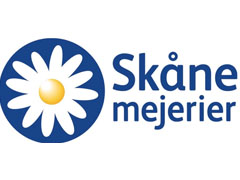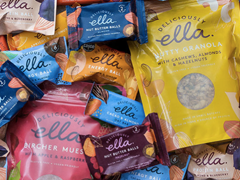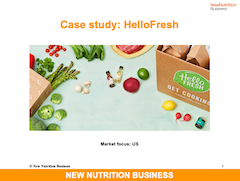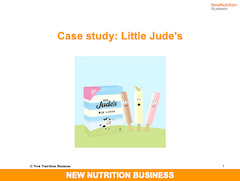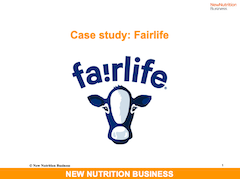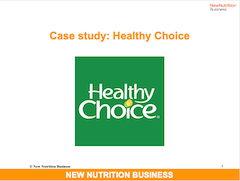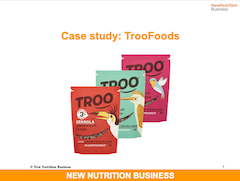Our case studies focus on brands and products that provide lessons from real challenges and opportunities which you can use to inform business strategy. They are packed with detail including brand portfolio, pricing, and communications and marketing strategy, merchandising and distribution, and come with a check list of key lessons learned.
Published: September 2019
Case study: Skånemejerier
What started as a cooperative for dairy farmers in 1964 has now grown to be one of the biggest dairy companies in Sweden, providing the country's southern regions with a range of dairy and fruit juice products. Skånemejerier sometimes talks about themselves as “the innovative dairy company” and is proof that even big companies can be creative and act quickly on new consumer trends.
Download powerpointPublished: September 2019
Case study: Tribe
Vegan sports nutrition brand Tribe has been around for less than four years but is already available in over 4,500 retailers across the UK and is aiming to become Europe's biggest sports nutrition brand by 2025.
Download powerpointPublished: September 2019
Case study: Deliciously Ella
A young woman's blog about combating a disease through a change of diet has grown into a trendy food brand with sales of around $12m. Deliciously Ella's range includes over 30 plant-based and gluten-free products ranging from ready meals to snack bars and breakfast cereal.
Download powerpointPublished: August 2019
Case study: HelloFresh
With a sales growth of 115% since 2016, German meal kit delivery company HelloFresh has become the number one meal kit delivery service in the US while expanding in its 10 other international markets. With a focus on convenience and freshness, HelloFresh is now a unicorn company and achieved sales of $1.43 bn in 2018.
Download powerpointPublished: August 2019
Case study: Little Jude's
Small-batch luxury ice-cream maker Jude's is looking to disrupt kids' ice cream with a low sugar promise. Sub-brand Little Jude's launched in 2017, and its fruit & veggie lollies has a sugar level 46% below the UK government’s 2020 target.
Download powerpointPublished: August 2019
Case study: Off The Eaten Path
Following PepsiCo’s October 2016 commitment to a multibillion-dollar spend on developing healthier drinks and snacks, the company launched Off the Eaten Path in 2017. The brand of healthier crisps offers "snacks for the curious" and was said to be one of PepsiCo's best performing brands in the first half of 2019.
Download powerpointPublished: July 2019
Case study: Fairlife
The ultra-filtered milk invented by dairy farmers Sue and Mike McCloskey became an instant success when Coca-Cola launched it under the Fairlife brand in 2015. Sales reached $300m+ in 2018, but a recent animal abuse scandal on one of Fairlife's main farms may take its toll on the brand.
Download powerpointPublished: July 2019
Case study: Healthy Choice
The CEO of ConAgra survived a heart attack in 1989 and proceeded to launch Healthy Choice - a range of healthy frozen foods developed in cooperation with FDA. Healthy Choice's sales have increased steadily ever since, growing by 16% in 2019 to reach $531m.
Download powerpointPublished: July 2019
Case study: TrooFoods
Founded in 2016, TrooFoods started as a brand of luxurious, healthy granola. But the founders soon realised that this was not enough for the business to take off, and TrooFoods today market their granola on a digestive wellness platform while offering gut health tests through a cooperation with Carbiotix.
Download powerpointPublished: June 2019
Case study: Gainomax
An entrepreneur saw a medical product’s potential for sports nutrition and created Gainomax in 1990. The brand is today owned by major Swedish dairy cooperative Norrmejerier and has grown to become the most well-known sports nutrition brand in Sweden.
Download powerpoint
